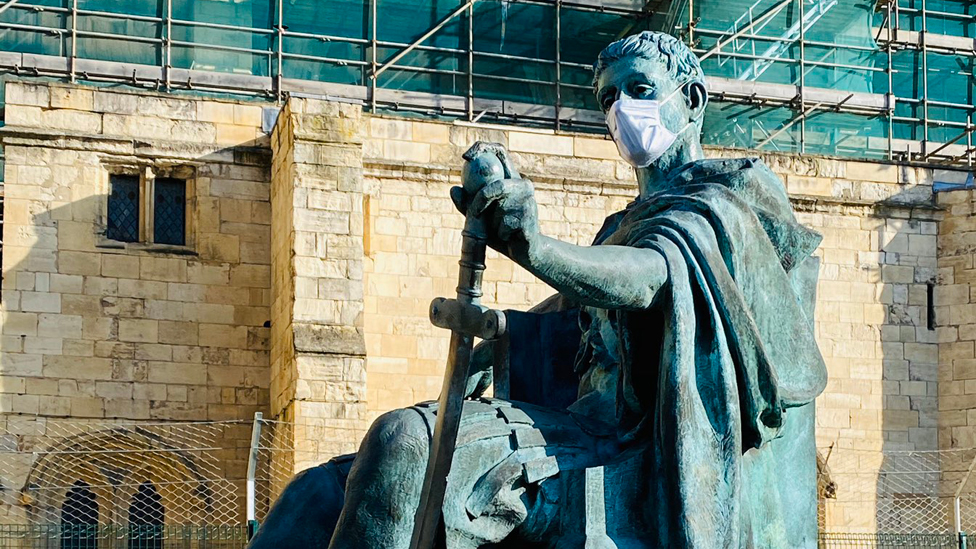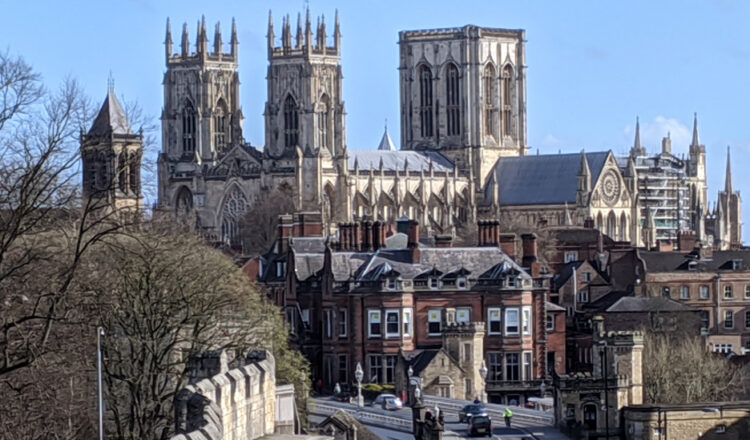In our popular Where in History series, The Historical Association’s secondary chair, Helen Snelson, explains where she would most like to go back in time and visit.
My favourite period of history is usually the one I am engaged in at the time – I am that fickle!
I am also a big fan of my home city of York, and that has just increased since being stuck here since March 2020.
So, (fully vaccinated, with a translation device and armed with an escape button in case of accidents, please!) I want to get in my time-travelling machine and visit York across time.
Wander with me through the streets of the Roman city of Eboracum and soak up the atmosphere of Britannia Inferior’s major city.
You won’t hear any English, but you will meet more citizens of African descent than in York in 2021.
It would be great to share a meal with the woman known to us as Ivory Bangle Lady.
And wouldn’t it give a tingle to witness the proclamation of Constantine as Emperor and know the huge impact of that event on the whole continent of Europe?
Imagine smugly returning home from the first millennium CE with answers that puzzle York’s modern archaeologists.
We could find both Eboracum’s amphitheatre and the Anglian Minster.
I might have to disguise myself as a man to go and listen to Alcuin give a lecture in his school.
With his reputation of having been the leading European intellect of his generation, I have high expectations.
York Minster’s Anglian library was famous across Christendom and to see all those lost books would excite any history nerd.
In my visit to Viking Jorvik I think I’d head down to the docks. My over-sensitised modern nose might find things easier down there – perhaps. It’s also there that I could soak up the sounds and sights (as well as the smells) of this major city that was a node in the vast Viking trading network in goods and humans.

To sit around a fire eating cheese and herring while listening to sagas of travel across the sea-routes deep into the Rus Land and maybe even over to Vinland… Wow!
I could stop and witness the ordering of the destruction of the land and people of the North of England by William the Conqueror, because he probably gave his terrible command in one of York’s two castles.
Could I bear it? Maybe I must! Should I also bear witness, and not be able to change, the horrific massacre of Jewish people in 1190, when the royal castle failed to provide protection from a local mob?
The dark past has to be faced, but please speed me on to the York Mystery Plays in the early 15th Century.
I want to be part of a local guild preparing its wagon play in the weeks prior to the Corpus Christi feast day.
Imagine being up before dawn in June to pull the wagon into line on the Toft Green.
How much fun would it be to leap up onto the wagon at the first station and perform our scene from the Bible?
Then to disassemble the scene and pull our wagon to station two and perform again.
I’ve always presumed that a lot of ale and pie must have been consumed to keep going for 16 hours.
Having witnessed 24 hours of popular religious procession in western Sicily in 2019, I wonder if it will be similar – an event involving everyone in the community with intense and genuine piety woven into a day of parades and feasting.
Oh to see and hear the fantastic art and culture that was lost as a result of the Reformation!
Do I bring back a precious piece of medieval art that would otherwise be lost? Do I interview any one of the three-quarters of the city’s people who were part of the Church? Do I warn Guy Fawkes’ teachers that he is at risk of radicalisation?!
And I am going to need to speed up my travels! Witnessing the surrender of York to Parliament’s army and feeling gratitude for the way the city was spared the looting meted out elsewhere.

Witnessing York’s decline to being the social not business centre of northern England, though retaining its legal and ecclesiastical status.
I would love to meet US Quaker John Woolman (big social-distancing needed to avoid the smallpox he had!) as he did the important work of persuading British Friends to actively campaign for slave trade abolition in 1772.
And let me give a big thumbs up to Anne Lister and Ann Walker celebrating their union in Holy Trinity Goodramgate in 1834 as I make my way towards the railway age.
Which would take me to the point of witnessing ‘my’ city take shape, with chocolate smells in the air, new and wider roads with small traders, the expansion of York well beyond its old city walls (saved from destruction), ‘Poverty: A Study in Town Life’, education for all, world wars, universities… What a school trip!


Helen Snelson leads the History PGCE at The University of York. She is also currently chair of the Historical Association’s Secondary Committee.
- Tags: Historic Environment





